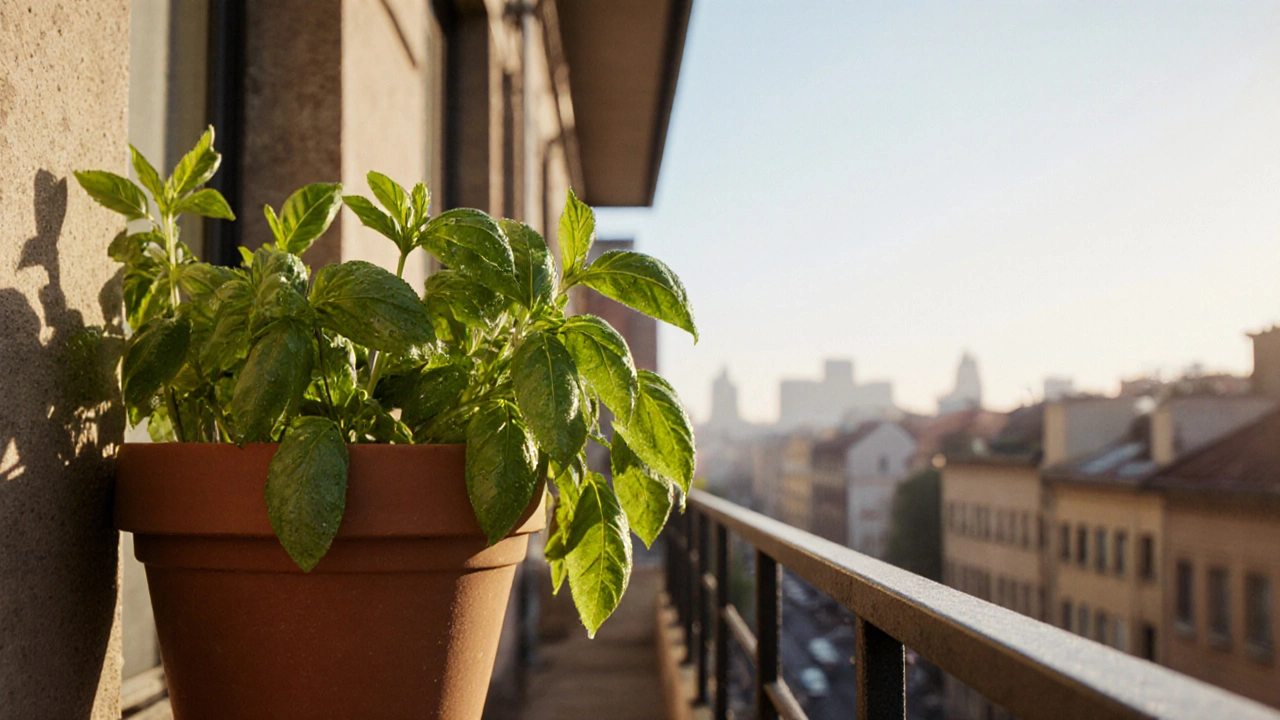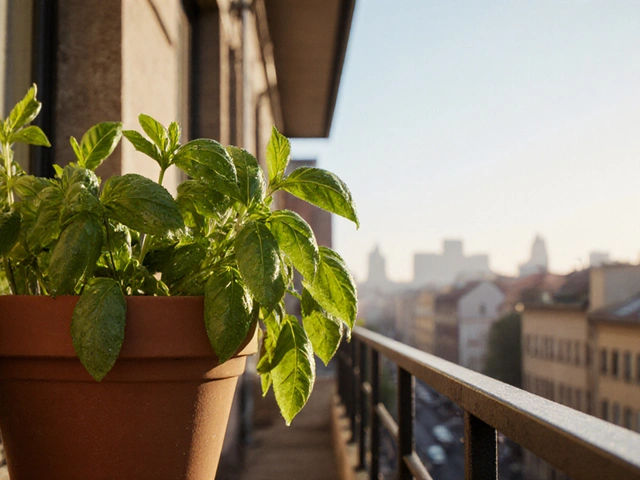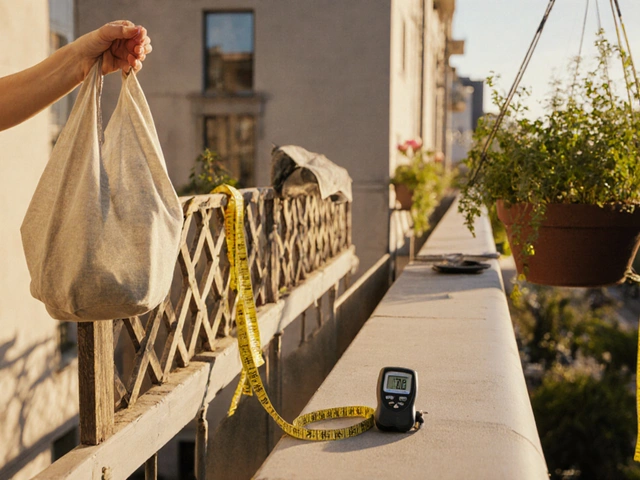When you’re looking for the easiest balcony plant, Basil is a top contender. Basil (Ocimum basilicum) is an aromatic herb that thrives in containers, needs modest sunlight, and delivers fresh leaves for cooking within weeks. Whether you live in a breezy coastal town or a compact city flat, a balcony can become a mini‑kitchen garden with almost no hassle. Below you’ll find the criteria that make a plant “easy”, a shortlist of proven balcony champions, and step‑by‑step instructions to get yours growing fast.
What makes a plant easy on a balcony?
Ease isn’t magic; it’s a mix of three practical factors:
- Sunlight tolerance: Balconies often get patchy light. Plants that handle partial shade or a few hours of direct sun win.
- Water forgivingness: Over‑watering or drying out are common mistakes. Species that bounce back from occasional neglect stay healthy.
- Growth speed and size: Fast‑growing, compact varieties fill pots quickly without becoming unwieldy.
When a plant checks all three boxes, you can expect a green thumb experience even if you’re new to gardening.
Top 5 easiest balcony plants
Here are the five plants that consistently outperform the rest in balcony trials across the UK, Europe, and North America. Each entry includes a quick micro‑definition and a few care tips.
1. Basil
Basil (Ocimum basilicum) loves warm weather, needs about 4-6 hours of sunlight, and prefers well‑draining soil. Water when the top centimetre dries out, and pinch off flower buds to keep leaves tender. Harvest regularly - the plant rewards you with fresh flavor for salads, sauces, and pesto.
2. Mint
Mint (Mentha spp.) spreads vigorously, tolerates shade, and thrives in moist conditions. Plant in its own pot to prevent takeover, and keep soil consistently damp but not soggy. Trim stems often to encourage new growth and keep the plant compact.
3. Chives
Chives (Allium schoenoprasum) are hardy perennials that need 3-5 hours of sun and well‑draining compost. Water when the soil feels dry to the touch. Cut the green tops just above the soil line to promote fresh shoots; the flavor improves with each cut.
4. Jade Plant
Jade Plant (Crassula ovata) is a succulent that stores water in its thick leaves, making it almost drought‑proof. Place it in a bright spot with at least 2-3 hours of sun, water sparingly (once the soil is completely dry). Its compact form works well on railings and small trays.
5. Marigold
Marigold (Tagetes spp.) produces bright blooms, tolerates full sun, and repels many garden pests. Sow seeds directly into a pot, water lightly until germination, then keep the soil moderately moist. Deadhead spent flowers to extend the blooming period.
How to set up your balcony garden for success
Even the easiest plants need a solid foundation. Follow these steps to create a balcony that encourages growth.
- Choose the right containers. Look for pots with drainage holes; 10-12cm deep works for herbs, while larger vegetables need 20cm or more. Terracotta is breathable but can dry quickly, whereas plastic retains moisture.
- Use a lightweight, nutrient‑rich potting mix. A blend of compost, coco peat, and perlite offers drainage and aeration. Avoid garden soil - it can compact and hold too much water.
- Position plants according to light needs. South‑facing balconies get the most sun; east‑west give morning or afternoon light. Group shade‑tolerant plants (mint, chives) together, and place sun‑loving ones (basil, marigold) in the brightest spots.
- Water wisely. Use a watering can with a narrow spout for precise application. Check moisture daily with your finger; if the top 2cm feels dry, water until it drains out the bottom.
- Feed regularly. Apply a slow‑release organic fertilizer (e.g., 5‑10‑5) once a month. For quick top‑ups, mix a teaspoon of liquid seaweed solution into the water.
- Provide wind protection. Balconies can be windy, especially near the sea. Place a lightweight screen or tie a breathable garden fabric around delicate plants like basil.
With these basics covered, most beginners see visible growth within two weeks.
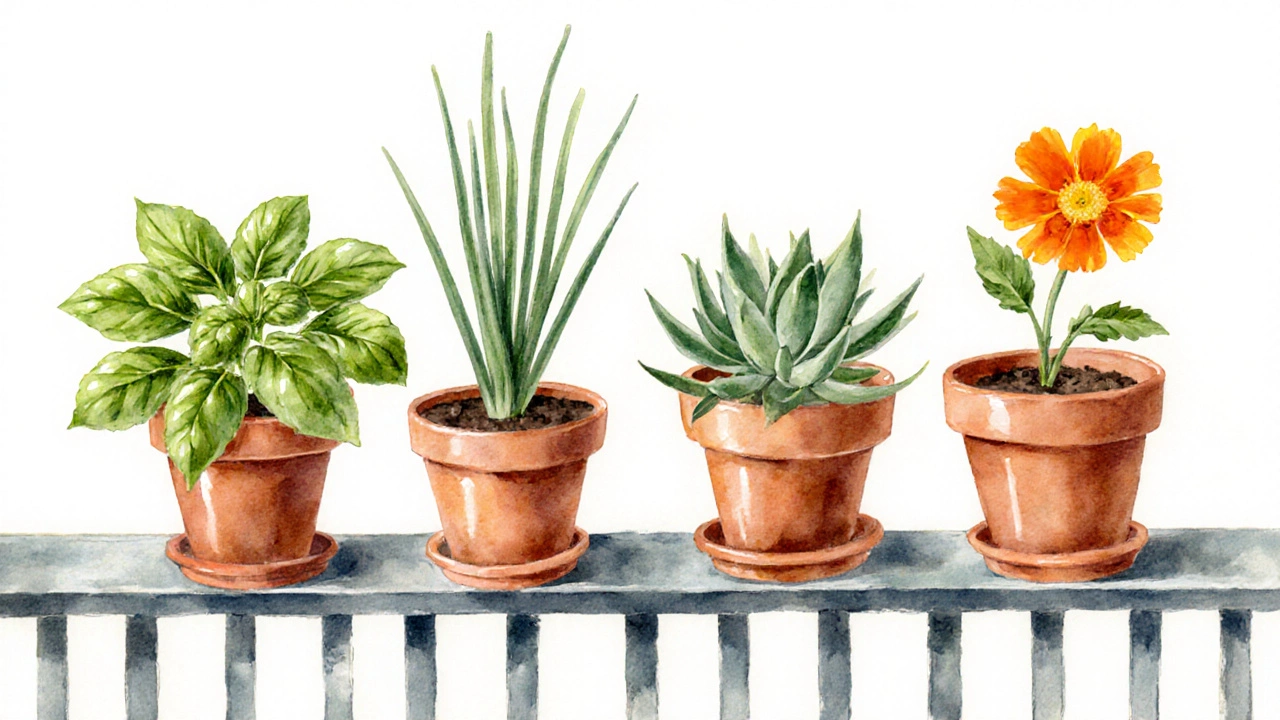
Common pitfalls and how to avoid them
Even simple plants can stumble if you fall into these traps.
- Over‑watering. Waterlogged soil rots roots. Use pots with drainage, and never let water sit in saucers for more than a few minutes.
- Insufficient sunlight. If leaves turn pale or stretch (etiolation), the plant is hungry for light. Move the pot to a brighter spot or add a reflective surface.
- Neglecting nutrient depletion. Potting mix drains nutrients quickly. Feed every month, and replace the soil annually.
- Pest invasions. Aphids love basil; a quick spray of diluted neem oil resolves the issue. For mint, spider mites may appear - wipe leaves with a damp cloth.
- Space crowding. Overcrowded pots reduce airflow, leading to mold. Thin seedlings to one plant per 10cm of pot surface.
Quick reference checklist
- Pick containers with drainage.
- Use a light, organic potting mix.
- Place sun‑loving plants in the brightest area.
- Water only when the top 2cm of soil is dry.
- Feed monthly with a balanced organic fertilizer.
- Inspect weekly for pests and remove affected leaves.
- Rotate pots seasonally to balance light exposure.
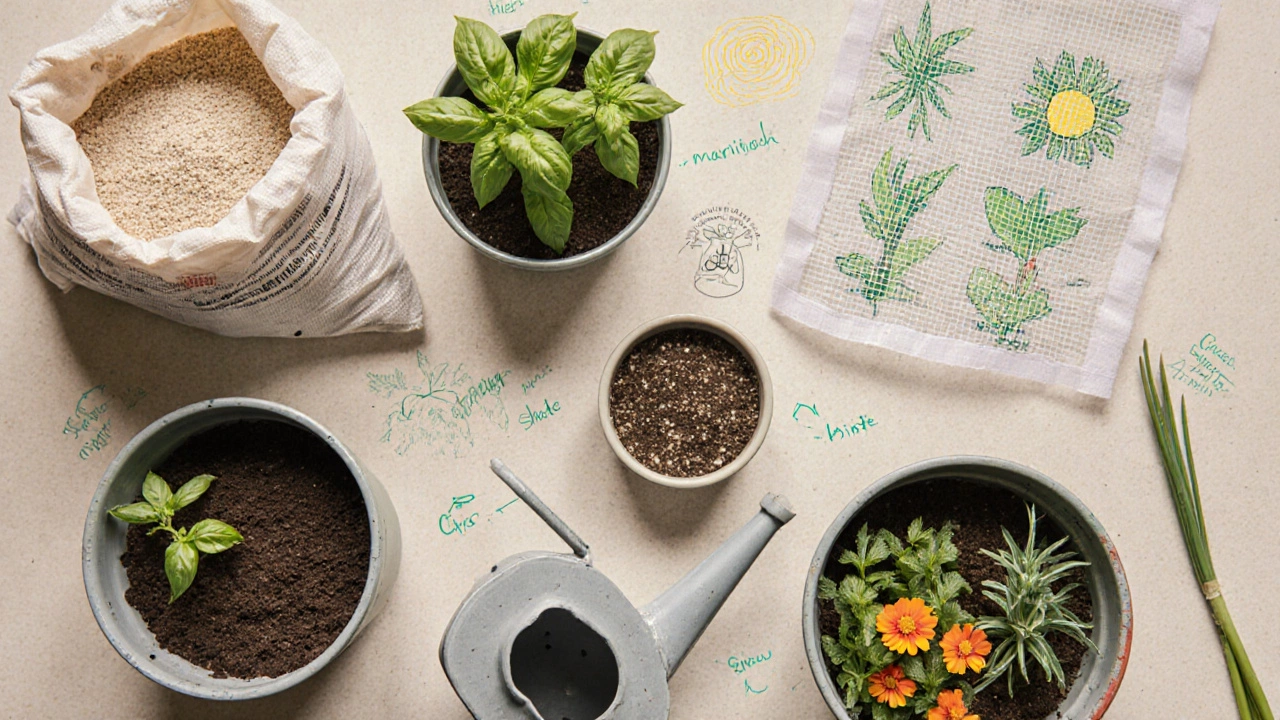
Comparison of the easiest balcony plants
| Plant | Sunlight | Water Needs | Growth Speed | Harvest / Bloom |
|---|---|---|---|---|
| Basil | 4‑6hrs full sun | Moist, well‑drained | Fast (4‑6weeks) | Leaves year‑round in warm months |
| Mint | Partial shade to sun | Consistently moist | Very fast (2‑4weeks) | Leaves continuous |
| Chives | 3‑5hrs sun | Moderate | Medium (6‑8weeks) | Leaves harvested repeatedly |
| Jade Plant | 2‑3hrs bright light | Low (dry between waterings) | Slow (months to noticeable growth) | Ornamental year‑round |
| Marigold | Full sun (6+hrs) | Moderate | Fast (5‑7weeks) | Blooms from summer to frost |
Frequently Asked Questions
Can I grow basil in a container that doesn’t have drainage holes?
It’s possible, but you risk water buildup and root rot. If you must use a solid‑bottom pot, add a layer of gravel and water sparingly, checking that excess moisture doesn’t sit for more than a day.
Do I need to feed my balcony herbs with fertilizer?
A light feeding every 4‑6 weeks keeps the soil fertile. Organic options like fish emulsion or a slow‑release compost tea work well and maintain the natural taste of the herbs.
What’s the best time of year to start a balcony garden in the UK?
Late March to early May, once the risk of frost has passed, gives plants a full growing season. You can still grow cool‑season crops like chives in early spring.
How often should I water my jade plant on a windy balcony?
Check the soil after a week; if the top 2cm feels dry, give a thorough watering. In windy conditions the soil dries faster, so weekly checks are wise.
Can I mix several of these easy plants in one large pot?
Yes, as long as the species share similar light and water needs. A common combo is basil, mint, and chives in a 30cm wide pot with a well‑draining mix.
